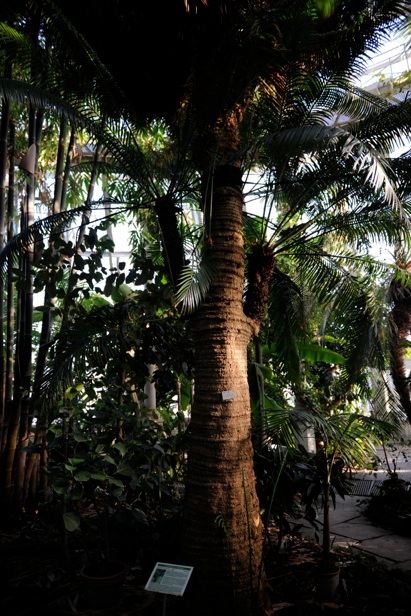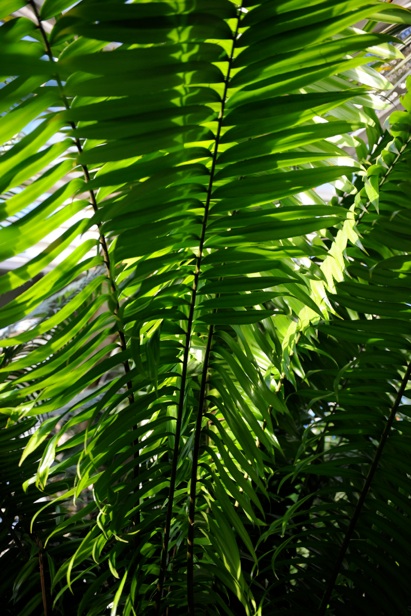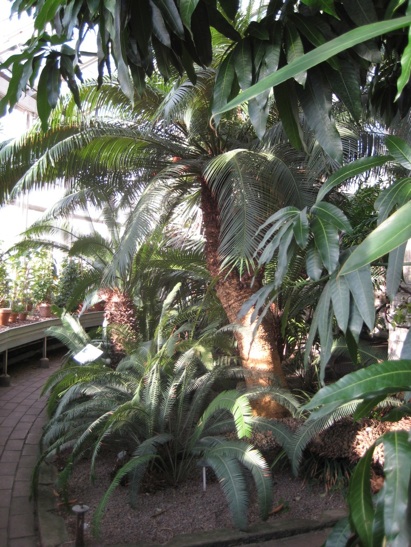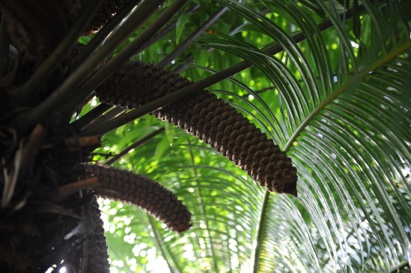HOMEPAGE | ATLAS & PHOTOGALLERY | EUROPEAN COLLECTIONS | HORTICULTURE | PROTECTION (cz) | CONTACTS | CZECH HOMEPAGE

HOMEPAGE | ATLAS & PHOTOGALLERY | EUROPEAN COLLECTIONS | HORTICULTURE | PROTECTION (cz) | CONTACTS | CZECH HOMEPAGE

Czech Cycads

Cycads in Denmark
Jan Andersson, Sweden
The Botanical Garden in Copenhagen has probably the most extensive Cycad collection in Scandinavia. The Botanical Garden moved to it current place in 1874 but many of the cycads in their collection are older than that.
Some of the plants on display in Copenhagen seem to be the oldest of the species in Europe, like the Zamia lindenii (1875), and a tall plants marked Encephalartos villosus. The Cycas circinalis from 1824 is the oldest cycad in the greenhouse.
Cycad Specialists: Liebmann
Frederik Michael Liebmann belongs to the better known Danish explorers and botanists mentioned in this context. He was a naturalist explorer, who in 1840 collected material in Mexico which later was to be attributed to the new genera Dioon and Ceratozamia.
The Danish company Tropical Zoo Plants is known as a container importer of Central American plants to European ZOOs, which made them the source of some of the biggest Zamia neurophyllidia plants in some European countries.
Copenhagen Botanical Garden
The list of the Cycad collection in the greenhouse called large Palm House and stated which year the plants or seeds were received:
•probably the tallest Cycas circinalis in Europe from seeds probably in 1824
•5 Cycas rumphii as plants in 1970
•3 big spectacular females Dioon edule var. edule as plants in 1842
•1 big Dioon edule var imbricicatum from its mexican habitat as a plant in 1842
•1 Dioon edule from seed in 1985 from its habitat in the Mexican state of Veracruz
•1 Dioon edule as seed in 1985.
•1 big male Encephalartos villosus with a stem around half a meter in heights, the tallest we have ever seen - see photo No. 1, the plant is visible behind the double headed marked as Cycas circinalis.
•A group of 3 subterranean Encephalartos villosus planted close to each other
•1 Encephalartos gratus from seed in 1970.
•1 female Ceratozamia mexicana from seed in 1878. It is unclear if this is the type that is called mexicana today
•1 male Stangeria eriopus as a plant in 1890
•1 big spectacular female Zamia lindenii as plant in 1875
•1 Zamia furfuracea as seed in 1842.
•1 female Zamia furfuracea as a plant in 1983.
•1 Zamia furfuracea as a plant in 1986
•1 Zamia variegata as a plant in 2000
•1 female Zamia muricata as a plant in 1842 from its habitat
The label system of the plants that is used is very informative so that it is stated which year the plant came to their collection. It is also stated with a S if the garden received the plant from a seed and with a P if they got it as an already developed plant. A star mark means that the plant is from its habitat.
Cycads in Europe & other countries
We are gradually mapping the European collection of cycads. Until now, we have done the following. Read more in our articles
•Czech Republic (CZ) - some of the text can be also found on our English homepage - with some of the oldest Encephalartos altensteinii and the tallest Cycas circinalis and Microcycas calocoma in Europe as well as a nice collection of fossil cycads
•Belgium (CZ) - This article adds information to the text published by Whitelock on Encephalartos laurentianus, the species described from the plants from the Belgian Congo, still in collection in Meise
•Cuba (EN) overview of the 8 Cuban species according to Flora de Cuba, with rare habitat photos - isolated country with not much information published abroad. The only article on the web.
•Denmark (EN) with the oldest Zamia lindenii in Europe
•Ireland (EN) - the birthplace of Ceratozamia fuscoviridis in Dublin
•the Netherlands (EN) with a beautiful collection in Leiden
•Poland (EN) with some historical plants from the original Warszewicz garden in Krakow, a fantastic group of Stangeria and 200 yrs old plants of Ceratozamia mexicana
•Portugal (EN) - see also our photo gallery from Lisbon
•Russia (EN) - CVs of Küster, Katzer and Perovsky after whom cycads were named
•Slovakia (EN) - with one of the EU well known cycad seed sellers
•Sweden (EN) with probably the largest Zamia pseudoparasitica on public display in Europe
We are usually using the names of the species as described by the gardens, even though sometimes a re-evaluation of the description might be needed.

Dioon in Copenhagen

Probably the tallest Cycas circinalis in Europe from seeds from 1824 reachest almost to the top of the Palm House

Zamia lindenii leaves from Copenhagen

Zamia lindenii from 1875 with female cones


Zamia lindenii female cones in Copenhagen